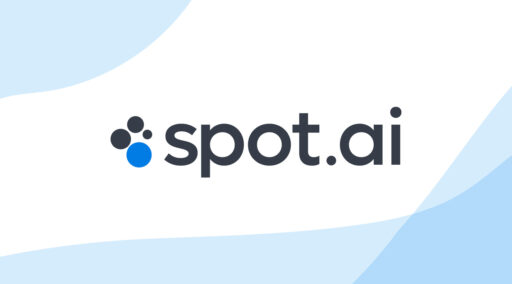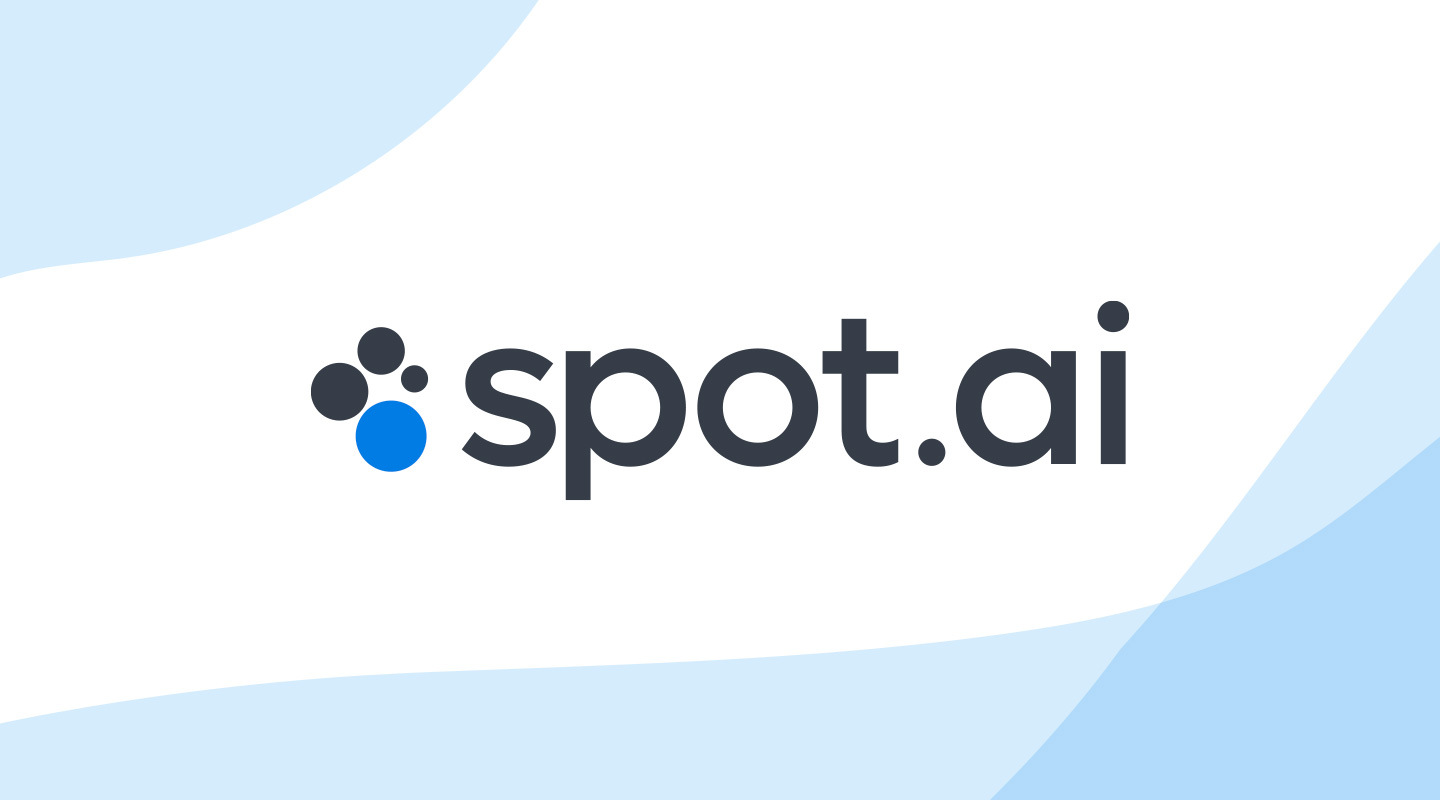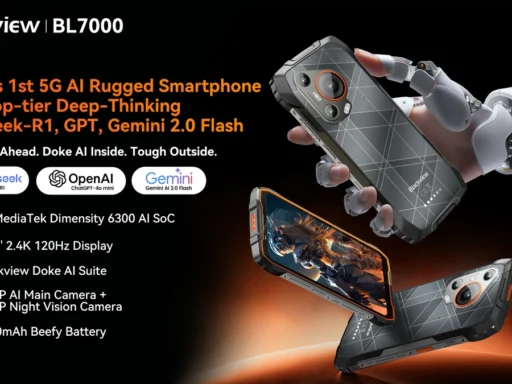Startups don’t have six months or six figures to waste on branding. You’ve got one shot to make your product look trustworthy, scalable, and fresh—all before the user even clicks sign up. That’s where AI steps in. It’s no longer about the prettiest logo. It’s about intelligent identity: visuals that reflect what the product does, why it matters, and where it’s going next.
Spot AI nailed this. Their logo isn’t just clean; it thinks. It communicates clarity, purpose, and reliability—the kind you need when building in the messy reality of cloud infrastructure and live video data.
Whether you’re a solo builder, a lean dev team, or scaling B2B SaaS, understanding how Spot AI uses artificial intelligence to power its branding will give you a roadmap to do the same. This isn’t theory. It’s how companies win in today’s attention-starved tech economy. Let’s break it down.
Transforming Branding With AI-Driven Innovation
Traditional branding used to take weeks of agency briefs, design iterations, and guessing what “feels right.”
Now? We can let machines test thousands of brand touchpoints in real-time—and predict what actually converts attention into trust.
AI in branding is not about stealing the designer’s job. It’s about amplifying it. You get designs that are not only visually appealing but backed by user data, behavioral inputs, and product context.
Here’s why it matters now more than ever:
- Speed: AI slashes creation time. Logos can evolve overnight based on market signals, not quarterly brainstorming.
- Consistency: AI tracks every visual across channels—from logos to navigation icons—keeping your brand tight and aligned.
- Performance: It learns what visuals drive clicks, logins, and conversions. Then it does more of that.
For fast-moving sectors like AI platforms, developer tools, and cloud software, this is the edge.
You’re not just shipping features—you’re building an identity every time someone sees your logo pop up in their browser. So here’s the real question:
How will your logo stand out in a sea of startup sameness?
AI makes standing out scalable. And Spot AI is showing how it’s done.
What Makes The Spot AI Logo Stand Out?
Spot AI’s logo hits different. It’s modern, smooth, and integrates the concept of intelligent visibility at its core. But what makes it more than “just good design” is the underlying intelligence behind its creation.
They didn’t just stick a generic tech icon next to some text.
They used AI design logic to carve out a brand that reflects:
– Technical Substance: The curves and gradients subtly echo surveillance optics, edge computing interfaces, and network continuity.
– Human Intuition: The color gradients aren’t about flash—they represent clarity, transparency, and seamless experience.
– Modular Flexibility: The logo adapts to almost any branding surface—from mobile UI to enterprise dashboards—without losing clarity.
Take a look at how Spot AI executes this kind of smart identity in action through their full-stack visibility platform—something we broke down here in all the ways that brand, tech, and AI intersect.
What makes it sharp isn’t that it looks cool (though it does). It’s that it reflects what Spot actually delivers: intelligent data access, in real time, across physical infrastructure.
That alignment between product and design vision? That’s the future of brand identity.
Benefits Of AI For Branding In Cloud Computing And Developers
If you’re building platforms or infrastructure, branding might feel like a low priority compared to uptime or API stability.
But guess what: investors, users, and even dev partners judge your tech by your logo before they read your docs.
That’s where AI-powered branding tools come in.
Let’s start with the practical wins for dev teams and cloud-centric businesses:
| AI Branding Benefit | Why It Matters for Tech Teams |
|---|---|
| Automated Logo Creation Tools | Generates usable logos fast—no agency delays, no Zoom calls about kerning. |
| Cloud-Based AI Systems | Syncs across teams, devices, and dev environments instantly. |
| Real-Time Personalization | Custom logos adapt based on user personas, regional data, or product tiers. |
How does this play out in the real world?
No redesign. No relaunch. Same logo DNA—new localized glasses.
On the cloud side, AI-designed logos reinforce scale and stability. Whether it’s AWS integrations or real-time dashboards, an intelligently generated logo promises, “This team knows what efficient cloud looks like.”
Bottom line? Developers don’t need to be designers.
But with AI tools for branding, they also don’t need to settle for “good enough.” They can ship intelligent identity alongside clean code—faster, smarter, and built to scale.
Technology-Driven Branding Trends in the AI Era
Software Development Branding Trends
When founders brainstorm their startup’s logo, questions like “How do we look modern without looking generic?” or “Can a logo really communicate intelligence?” come up often. That’s where AI-driven aesthetics are changing the game for software and SaaS brands.
Today’s software logos aren’t about playful mascots or cluttered gradients anymore. Instead, sleek, minimal lines are paired with smart, data-informed tweaks—often generated or refined by AI. This hybrid of simplicity and sharp functionality screams agility to investors and end-users alike.
Take Notion and Linear, for instance. Their logos don’t scream—they whisper efficiency and thoughtful engineering. These companies lean into logos that reflect workflows: modular, iterative, and built to scale. It’s not just artistic taste—it’s branding imbued with machine learning’s logic.
Then you’ve got seed-stage platforms using tools like Looka or LogoMakr backed by generative design intelligence. These startups aren’t hiring ten-person branding agencies—they’re plugging into AI to test dozens of visual identities overnight and picking the most resonant look via real-user feedback loops.
Key themes shaping today’s software branding:
- Geometric minimalism — Logotypes built around bold, smart shapes
- Adaptive branding — Logos that transform for dark mode, app icons, or animations
- AI-assisted evolution — Real-time logo iterations based on audience interaction
These aren’t gimmicks. They’re survival traits in a hyper-saturated SaaS landscape. If intelligence is your product, your spot ai logo better show it before people even click “About Us.”
Cloud Computing Branding Solutions for Enterprises
In the world of cloud services, trust is branding’s biggest currency. And the logo? That’s the handshake before the handshake. Users looking at AWS, Azure, or Google Cloud aren’t just buying storage—they’re buying reliability.
So how do industry giants reflect that? Look at AWS: its angular, upward-leaning logotype conveys forward momentum. Microsoft Azure uses clean lines to reflect its integration with the Microsoft ecosystem, while Google Cloud utilizes a distinct multi-colored swirl—instantly recognizable, even in grayscale.
Logos in enterprise cloud branding need to do three things:
- Communicate immunity to failure — symmetry and balance signal system stability
- Represent abstract scale — color layering and motion hint at infrastructure at work
- Visual ROI — logos that look great on badges and browser tabs alike
Startups entering this space are learning fast. AI-powered logo refiners like Brandmark are giving CTOs with zero design background the power to create logos that hit the golden trio—clean, confident, and cloud-native.
According to a 2023 Stanford Brand Lab study, logos that scored high on “data security perception” (yes, that’s a testable trait now) helped startups win 38% more early-stage funding. That’s especially true when pitching enterprise clients bleeding from past vendor breaches.
So whether it’s your site, pitch deck, or trade show banner—the logo isn’t just décor. It’s architecture. A smart, AI-guided brand mark signals your infrastructure philosophy before you even speak.
Web Services for AI Branding and Logo Integration
Branding doesn’t sit still anymore. Businesses wonder, “Will my AI-generated logo still pop on that Apple Vision Pro home screen, my business card, and an Insta Reel?” The pressure to get it right across platforms is real.
Here’s where AI-powered branding platforms like Canva’s Magic Design and Wix Logo Maker come in. They don’t just draw logos—they simulate how they look in digital contexts and physical print. A spot ai logo now gets tested in web headers, mobile apps, and even avatars before launch.
Web service integrations make this easier. Figma’s brand kit plugins, Adobe’s logo responsiveness tools, and Cloudinary’s AI-driven media optimization ensure your branding runs smoothly between your site, marketplaces, and social streams.
In short, today’s branding tools don’t stop at pretty. They’re built to scale interaction points, screen sizes, and customer moods. They manage the digital life of your logo as intelligently as a logistics chain.
Impact of Artificial Intelligence on Tech Startup Logos
The Startup Perspective: Logo Design for Emerging Tech
Bootstrapped founders often ask: “How do I get a legit logo without draining my burn rate?” Or, “Can AI give me a unique design—not templates?” Let’s talk startup pragmatism.
From launch decks to beta invites, early logos carry more than look—they carry the entire story. A great startup logo isn’t just futuristic, it’s fast. It adapts to multiple visual forms, resonates with early adopters, and feels one step ahead.
Using AI doesn’t mean losing creativity. It means supercharging it. Products like Tailor Brands or Hatchful help young teams generate dozens of logo variants based on neural inputs (vision, tone, industry). These aren’t rigid templates—they evolve with brand direction.
Some of the sharpest-looking early-stage logos—like those from Genesys AI or EquiStack—emerged from generative tools molded by founder vision. In a world where attention is oxygen, a spot ai logo that feels custom-built is your best pitch slide.
AI Breakthroughs in Logo Design Customizations
Brand managers know this moment: You launch a logo and get real feedback. Something’s off. Too flat. Too cartoonish on mobile. Now what? Traditionally, redesign means weeks. With AI in the loop, that edit cycle drops to hours.
Recent breakthroughs in logo customization tools are making it easy to evolve logos in real-time based on social feedback, A/B testing, or even cultural shifts. AI tools like Looka Pulse or Designify use neural networks that automatically adapt logo dimensions, line weight, and even mood-shifting colors as user engagement patterns change.
The smart side? These changes are tracked. Think of it as version control for aesthetics. You see which color palette earned more clicks, or which font weight popped better on JetBlack vs. DayWhite UI. That’s intelligent design—not just automation.
Here’s what’s making waves:
- Self-adjusting logos that tweak presentation based on screen brightness or user persona
- Feedback-driven refinements that learn from click rates and hover times
- Hyper-modular ID systems where logo parts morph across email headers, product UIs, and investor decks
For startups on razor-thin timelines, this is game-changing. You get a consistent but fluid brand system—and more time to focus on product, not pixels. Because in the attention economy, logos don’t just represent you. They evolve with you.
The Role of Data in Intelligent Logo Design
Most founders ask the same thing when they first hear about AI branding: “How can a machine understand my brand better than I do?” Fair question. But here’s the truth — AI doesn’t replace your insight; it turns your scattered branding instincts into a killer visual strategy, faster than any creative sprint.
AI thrives on patterns. It’s not looking at your favorite color or your cousin’s opinion on the font. It scans historical branding data, audience interaction logs, and emotional triggers from past high-performing logos. It all boils down to seeing what converts — then multiplying it.
For example, the Spot AI logo is more than just a clean font with a circle. AI design software pulled from thousands of computer vision startups, recognized shapes associated with clarity and vision, and landed on a mark that screams modern tech without trying too hard. It’s not magic. It’s math backed by smart datasets.
This isn’t just about logos. It’s packaging, websites, banner ads — every visual touchpoint feeding into one data-fueled identity. You want consistency across platforms? AI doesn’t drop the ball. It builds visual templates that evolve with your brand. Test, tweak, test again — it never sleeps, and it never forgets what worked last quarter.
Leading brand architects say it straight. AI is the co-pilot that never zones out in meetings. Future-proofing your brand isn’t about guessing trends — it’s about leveraging data to evolve in real time. That’s where AI delivers. It’s not about looking the most creative — it’s about winning the attention algorithm game.
Advanced Insights into Automated Logo Creation Tools
You wouldn’t build your app with duct tape and hope it scales. Same with your logo. Tools like Looka, Logojoy, and Adobe Firefly aren’t just saving time — they’re eliminating bottlenecks. Old-school branding agencies make you wait weeks. These platforms give you sharpened visuals in minutes.
Looka dives into style preferences based on existing brand data — it doesn’t just ask what color you like, it reverse-engineers your logo from user behavior and brand goals. Logojoy mimics professional design workflows down to the psychology of spacing and layout. Firefly, Adobe’s latest AI infusion, taps directly into your brand identity and scales visuals instantly across platforms without losing fidelity.
Here’s what most miss: even niche companies — think drone repair shops or AI-powered supply chain dashboards — can carve out unique, recognizable logo assets with these tools. It’s not about being original from scratch; it’s about positioning. AI tools are built to avoid cookie-cutter results by understanding your vertical’s visual DNA and pushing away from generic designs.
Bottom line? If you want scalable, hyper-relevant visuals with minimal runway — automation isn’t a shortcut. It’s smart design at operational speed.
Best Practices for Utilizing AI in Intelligent Brand Design
Look, competition in tech branding isn’t cute anymore. Everybody’s got their sleek font, color palette, and tagline. If you’re not leveraging AI in your branding playbook, you’re playing pinball in a Formula One race.
First thing: own your niche. AI design tools analyze your customer profiles and industry benchmarks at a granular level. If you’re in SaaS security, for example, your logo better scream trust, precision, and modernity — not “we found this on Fiverr.”
Second: kill the “cheap vs. premium” debate. Focus on scalability, not price tags. A $35/month AI logo tool that auto-generates print-ready assets in 3 sizes, plus web animation variants? That’s not cheap. That’s leverage.
Here’s how smart startups are using AI branding:
- Rapid iterations: swap colors, typefaces, or iconography and generate split-test variants — no design team needed.
- Cross-format rollout: from logos to app icons and business cards, AI secures fidelity everywhere.
- Zero-lag updates: launching a sub-product? AI spins off a logo variant aligned with the parent brand instantly.
Human creativity still wins loyalty. But here’s the twist — AI multiplies your best creative instincts. The goal isn’t to be less human. It’s to bring creative precision to every brand layer. Think of AI like a guitar amp — your vision, amplified.
Keeping Pace with AI Design Trends
Let’s be honest. If your visual identity hasn’t changed in three years, you’re already irrelevant in AI branding. Tech now moves faster than your marketing deck can keep up, and logo design trends are shifting with it.
We’re seeing clean, modular marks dominate. Logos aren’t just images anymore — they’re responsive systems. Think stylized text + rotating symbol that expands in animation + dark mode variant = brand dominance across mobile and desktop.
AI-generated design doesn’t wait for you to catch up. The software keeps updating its own trend datasets based on what’s converting across industries. What’s working in fintech jumps to health tech by next month. The tools don’t sleep. You’ll fall behind if you do.
Brands that win are blending micro-animation, adaptive logos, and personalized font libraries cooked up via natural language prompts. That’s where creativity meets optimization.
Want to stay light on your feet?
- Refresh your brand guides every quarter using AI-led audits.
- Run competitive logo scans — AI shows how your visuals stack up in your vertical.
- Use UX feedback loops to test logo recognition and emotional resonance in real-world scroll feeds.
Spot AI’s logo flows with the modern AI aesthetic. Simple on the surface, rich in meaning — it scales beautifully, loads insanely fast, and reads clean on any background. That’s what AI branding done right looks like.
Final Call: Actionable Steps to Power Branding with AI
If you’re still deciding when to start using AI for your brand visuals — you’re already lagging. The question now is how fast you want to move.
Here’s your starter pack:
- Use tools like Looka or Firefly. Setup takes five minutes, and you walk away with full-stack branding assets.
- Set brand KPIs tracked by AI. Visual consistency, engagement lift post-rebrand, emotional heatmaps from click-throughs — measure everything.
- Test in real time. Use A/B split visuals for ads, site headers, app splash screens. Let performance guide your styles, not gut feel.
Don’t wait for permission. Build, test, reposition. If your logo doesn’t speak in under three seconds — AI can fix that.
The era of static design decks is dead. AI-fueled brand identities evolve like apps. They update, react, and self-optimize.
You don’t need to fake being a design visionary. Just admit machines can help, and then out-execute everyone using the same tools. AI will never replace creativity — but it’s already evolving faster than most of us can sketch a wireframe. Ride the wave. Or watch competitors pass you with logos built by algorithms that already know your ideal customer better than you do.







